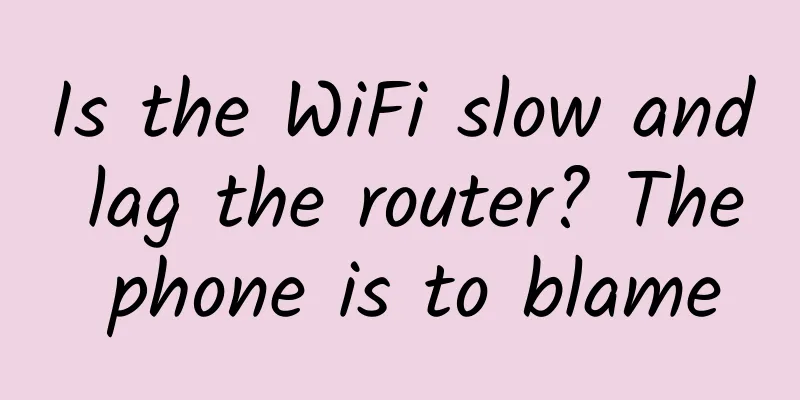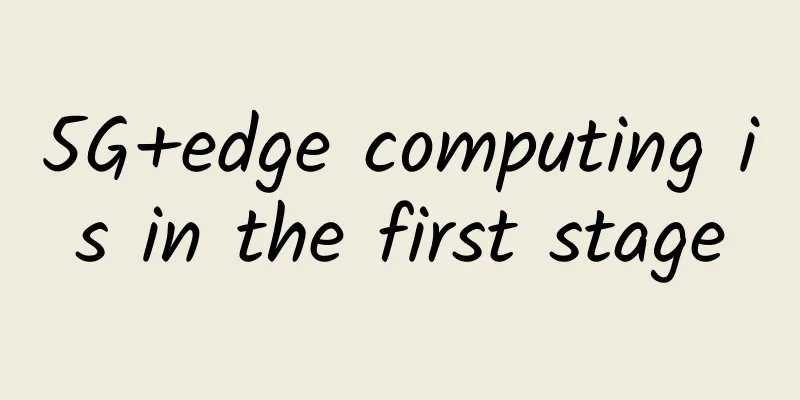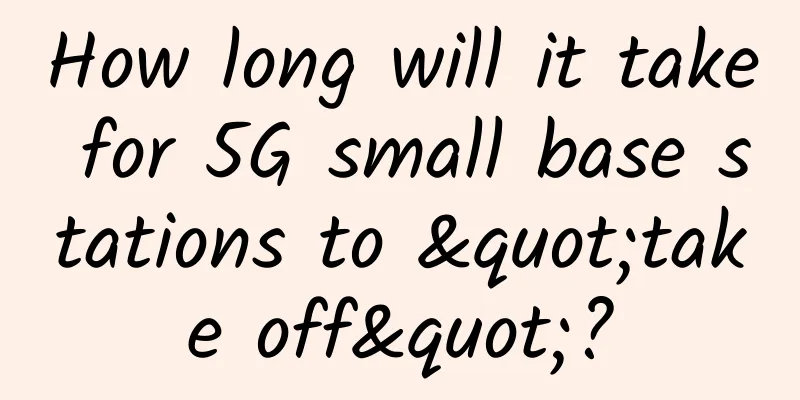Double 11 Carnival, drink this bowl of "traffic control" soup

|
As the Double 11 shopping festival approaches, the transaction volume was only 50 million in 2009, but reached 268.4 billion in 2019. This year marks the 12th Double 11 shopping festival, and I am excited just thinking about it. Alibaba people like to regard Double Eleven as Team Building. There is a widely circulated saying: Fighting is the best team building. Those who have not participated in Double Eleven are called colleagues, and those who have participated in Double Eleven are called comrades-in-arms. In the previous article, I explained the mechanism of service avalanche and circuit breaker through the story of the Three Kingdoms, and I created a wheel myself: the circuit breaker. This article will explain two traffic control components used by first-tier companies: Sentinel and Hystrix, as well as their horizontal comparison and how to choose. The main contents of this article are as follows: This article has been included in my Github: https://github.com/Jackson0714/PassJava-Learning 1. Circuit Breaker, Degradation, Current Limitation, and Isolation When facing high concurrent traffic, we usually use four methods (fuse breaking, downgrading, current limiting, and isolation) to prevent the impact of instantaneous large traffic on the system. The two traffic guards to be introduced today are specifically used in this regard. Let me first give you a brief introduction. What is a circuit breaker? Circuit breaker scenario diagram @Wukong Chat Architecture Keyword: circuit breaker protection. For example, if service A calls service B, and the request takes too long due to network problems, service B downtime, or long processing time of service B, if this happens multiple times within a certain period of time, B can be directly disconnected (A no longer requests B). The request to call service B directly returns degraded data without waiting for the execution of service B. Therefore, the problem of service B will not cascade to service A. What is downgrade? Degraded scenario diagram @Wukong Chat Architecture Keyword: return downgrade data. The website is at a peak traffic period, and the server pressure increases dramatically. According to the current business situation and traffic, some services and pages are strategically downgraded (stop services, and all calls directly return downgrade data). This relieves the pressure on server resources, ensures the normal operation of core businesses, and ensures that customers and most customers receive the correct response. Degraded data can be simply understood as a quick return of false, and the front-end page tells the user "The server is currently busy, please try again later." What is current limiting? Current limiting scenario diagram @Wukong Chat Architecture Control the flow of requests and only release some requests so that the service can bear the traffic pressure that does not exceed its capacity. What are the similarities between circuit breaker and downgrade?
What is the difference between circuit breaker and downgrade?
What is quarantine?
2. Hystrix What is Hystrix Hystrix: A framework for high availability assurance. Produced by Netflix (Netflix can be understood as domestic video websites such as iQiyi). History of Hystrix
Hystrix Design Philosophy
Hystrix thread pool isolation technology Using thread pool isolation, for example, there are 3 services A, B, and C, and each service's thread pool is allocated 10, 20, and 30 threads. When all 10 threads in the thread pool of service A are used, if the number of requests for calling service A increases, it is not possible to add more threads, because the threads allocated to service A have been used up, and threads from other services will not be taken, so other services will not be affected. Hystrix uses thread pool isolation mode by default. Thread pool isolation technology Advantages of thread pool isolation technology
Disadvantages of thread pool isolation technology
Hystrix semaphore isolation technology As shown in the figure below: To put it simply, there is a certain number of semaphores in a pool. Before service A calls service B each time, it needs to apply for a semaphore from the pool. Only after the semaphore is obtained can it call service B. Get semaphore Comparison of thread pool isolation and semaphore scenarios
3. Sentinel 3.1 What is Sentinel Sentinel: A traffic control component for distributed service architecture. It mainly uses traffic as the entry point to help developers ensure the stability of microservices from multiple dimensions such as current limiting, traffic shaping, circuit breaking and degradation, system load protection, and hotspot protection. 3.2 History of Sentinel
3.3. Features of Sentinel
To summarize with a picture: Key Features of Sentilel 3.4 Sentinel Composition
3.5 Sentinel Resources A resource in Sentinel is a core concept and can be anything in a Java application, including a provided service or even a piece of code. Code that can be defined through the Sentinel API is a resource that can be protected by Sentinel. Resources can be identified in the following ways:
3.6 Sentinel’s Design Concept As a traffic controller, Sentinel can adjust random requests into appropriate shapes as needed, as shown in the following figure: Traffic Shaping 4. Comparison 4.1. Comparison of Isolation Design Hystrix Hystrix provides two isolation strategies, thread pool isolation and semaphore isolation. The most recommended and commonly used one in Hystrix is thread pool isolation. The advantage of thread pool isolation is that it has a high degree of isolation and will not affect other resources, but threads themselves have their own problems. Thread context switching consumes more CPU resources. If the requirement for low latency is relatively high, the impact is still quite large. In addition, creating threads requires memory allocation. The more threads are created, the more memory needs to be allocated. And if a thread pool is created for each resource, thread switching will bring greater losses. The semaphore isolation of Hystrix can limit the number of concurrent calls to a resource. It is lightweight and does not require explicit creation of a thread pool. However, its disadvantage is that it cannot automatically downgrade slow calls and can only wait for the client to time out. Cascade blocking may still occur. Sentinel Sentinel can provide semaphore isolation through flow control in the concurrent thread number mode, and it also has a circuit breaker degradation mode for response time to prevent too many slow calls from filling up the concurrency number and affecting the entire system. 4.2. Comparison of Circuit Breaker and Downgrade Sentinel and Hystrix are both based on the circuit breaker mode. Both support circuit breaking based on the exception ratio, but Sentinel is more powerful and can perform circuit breaking and downgrading based on response time, exception ratio, and number of exceptions. 4.3 Comparison of real-time statistics Sentinel and Hystrix both perform real-time statistics based on sliding windows, but Hystrix is an event-driven model based on RxJava, publishing response events when a service call succeeds/failed/timed out, and finally obtains a real-time indicator statistics stream through a series of transformations and aggregations, which can be consumed by fuses or dashboards. Sentinel is based on the sliding window of LeapArray. 5. Outstanding Features of Sentinel In addition to the three major comparisons mentioned above, Sentinel has some features that Hystrix does not have. 5.1 Flow Control Traffic control: The principle is to monitor indicators such as QPS or number of concurrent threads of application traffic, and control the traffic when the specified threshold is reached to avoid being overwhelmed by instantaneous traffic peaks, thereby ensuring high availability of the application. Sentinel can perform flow control based on QPS/concurrency or based on call relationships. There are several ways to control traffic based on QPS:
Slow start preheating mode schematic
Schematic diagram of uniform queuing mode
Limit traffic based on related resource traffic: associated traffic limiting. 5.2 System Adaptive Current Limiting Sentinel system adaptive current limiting controls the application inlet traffic from an overall dimension. With the help of TCP BBR ideas, combined with monitoring indicators of several dimensions such as application load, CPU utilization, overall average RT, inlet QPS and number of concurrent threads, the adaptive flow control strategy is used to balance the system's inlet traffic and system load, so that the system can run at the maximum throughput as much as possible while ensuring the overall stability of the system. Adaptive current limiting principle diagram We imagine the process of the system processing requests as a water pipe. The incoming requests are like water filling the water pipe. When the system processes smoothly, the requests do not need to queue up and pass directly through the water pipe. The RT of this request is the shortest. On the contrary, when the requests accumulate, the time to process the requests becomes: queuing time + shortest processing time. Corollary 1: If we can ensure the amount of water in the pipe and allow the water to flow smoothly, the number of queued requests will not increase; that is, the system load at this time will not deteriorate further. Corollary 2: When the inlet flow rate is kept at the maximum value of the flow rate out of the water pipe, the processing capacity of the water pipe can be maximized. 5.3. Real-time monitoring and control panel Sentinel provides a lightweight open source console that provides machine discovery and health management, monitoring (standalone and cluster), rule management and push capabilities. Sentinel Console 5.4 Development and Ecosystem Sentinel is adapted to Spring Cloud, Dubbo, and gRPC. You can quickly access Sentinel by introducing dependencies and simple configuration. I believe Sentinel will be a powerful tool for future traffic control. I am optimistic about Sentinel. 5.5. Comparison and summary of Sentinel and Hystrix Comparison between Hystix and Sentinel Final Thoughts Some readers asked me how to design a flash sale system. In previous articles, I have revealed the architectural design of the flash sale system. Now I will summarize the eight major points of the flash sale system:
This article is reprinted from the WeChat public account "Wukong Chats about Architecture", which can be followed through the following QR code. To reprint this article, please contact the WeChat public account "Wukong Chats about Architecture". |
<<: Don’t worry, tomorrow’s 5G may be “today’s high-speed rail”
Recommend
5G will revolutionize the Internet of Things, but not soon
5G technology is the most anticipated network upd...
How to implement a real-time monitoring system for tens of billions of visits?
[51CTO.com original article] The author has joine...
SD-WAN, 5G remote work technologies help future networks
As the remote workforce continues to grow, newer ...
[Restock] Bricklayer Los Angeles CN2 GIA (DC6/DC9)/Japan Softbank special price $46.6/year
Bandwagonhost has restocked the special annual pa...
RepriseHosting: $28.54/month-L5640/16G memory/240G SSD+8TB HDD/1Gbps bandwidth/Seattle data center
RepriseHosting recently launched a limited-editio...
To promote cooperative learning teaching practice, the 4th National Cooperative Learning Seminar opened
On December 4, the 2019 Fourth National Seminar o...
Remote workers are greener, but the technology they use still has a carbon cost
According to foreign media TechCrunch, affected b...
WiFi 7 will have these improvements with a speed 2.4 times faster than WiFi 6
At the MediaTek Technology Summit, MediaTek annou...
edgeNAT: 20% off for monthly VPS and 30% off for annual VPS, top up 600 yuan and get 100 yuan free, available in Hong Kong/Korea/US data centers
edgeNAT has released a promotional plan for June,...
China Internet Development Report 2020: 1.3 billion netizens make online payments totaling 24.9 trillion yuan
Recently, at the 2020 (19th) China Internet Confe...
"Intelligent Ecosystem to Open the Future with Data" ——2021 China Digital Ecosystem Heroes Conference was grandly held
On May 8, the "2021 China Digital Ecosystem ...
Friendhosting Summer Promotion: All VPSs are as low as 55% off, and unlimited traffic for 10 data centers for half a year starts from 8 euros
Friendhosting sent a promotional email yesterday ...
Ministry of Industry and Information Technology: my country's 5G mobile terminal connections reached 365 million, accounting for more than 80% of the world
On August 3, at the 2021 Global Digital Economy C...
Let’s talk about deterministic networks
Low latency in the network is particularly import...
Maxthon Hosting: Los Angeles 9929 Line 38 yuan/month-1GB/20G SSD/600GB@200Mbps/Free backup
Aoyo Host (aoyozhuji, aoyoyun) was founded by shy...









